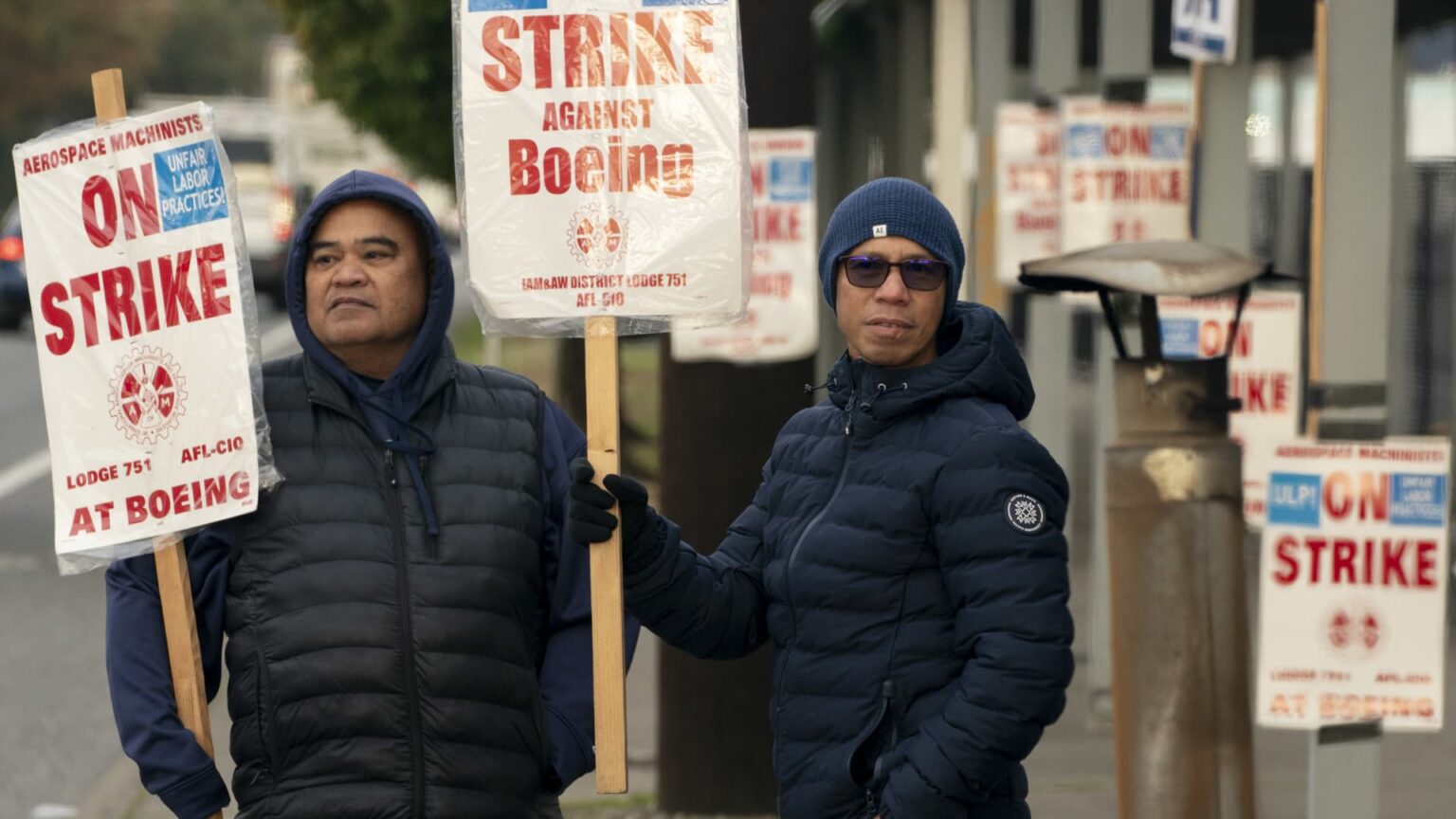Boeing workers gather on a picket line near the entrance to a Boeing facility during an ongoing strike on October 24, 2024 in Seattle, Washington.
David Ryder | Getty Images
Boeing‘s more than seven-week machinist strike is set to hit Friday’s U.S. jobs report — the last one that will be released before Nov. 5 presidential election and the Federal Reserve’s meeting next week. The company’s impending job cuts, meanwhile, will take months more to show up.
Some 44,000 U.S. workers were on strike when the Labor Department conducted its survey in mid-October. About 33,000 of them are Boeing machinists, who walked off the job on Sept. 13 after overwhelmingly voting against a union-endorsed labor contract and in favor of their first strike since 2008.
Economists expect the U.S. to have added 100,000 jobs in October. Bank of America this week forecast that payroll tallies will be at least 50,000 lower than they would have otherwise been because of the strikes and affects of both Hurricane Helene and Hurricane Milton.
Federal Reserve Governor Christopher Waller said in an Oct. 14 speech that those factors could have a 100,000-job impact on the October report and called the reductions a “significant but temporary loss of jobs.” He said they “may have a small effect on the unemployment rate, but I’m not sure it will be that visible.”
Boeing’s machinist strike has complicated the plane maker’s already difficult position as its new CEO Kelly Ortberg tries to steer the giant U.S. manufacturer and exporter out of safety, quality and financial crises. The unionized machinists, mostly in the Seattle area, voted 64% against a new proposal last week, which included 35% wage increases, compared with a 25% wage increase in an earlier tentative agreement.
In an aerial view, a Boeing 737 Max fuselage is seen on a railcar during an ongoing strike by Boeing factory workers in Seattle on Oct. 24, 2024.
David Ryder | Getty Images
The Biden administration has gotten involved, urging the two sides to reach a deal.
“With the continued assistance of Acting Secretary of Labor Julie Su, your Union bargaining committee had a productive face-to-face meeting with the company to address key bargaining issues,” the International Association of Machinists and Aerospace Workers District 751 said late Tuesday.
Su had met with both sides before the last proposal was brought to a vote on Oct. 23.
Boeing’s impact on U.S. employment numbers is set to continue. CEO Ortberg said earlier this month that the company will cut 10% of its global workforce, or 17,000 people, though job-loss warning letters aren’t expected to go out until mid-November.
Ortberg, who took over as CEO in early August, said Boeing needs to become leaner and focus on its core businesses.
“One of the things I’ve heard from a lot of employees is there’s just too much overhead. It slows them down in being able to get their work done,” he said on an Oct. 23 quarterly call. “So we’re going to really focus this workforce reduction in streamlining those overhead activities, consolidating things that can be consolidated.”
Layoffs and their announcements are more complicated to factor into federal employment surveys than strikes because “we don’t have a good sense of when they occur,” noted Bank of America economist Stephen Juneau.
The impact of the Boeing’s strike could lead to further cuts in the fragile aerospace supply chain.
Boeing fuselage maker Spirit AeroSystems earlier this week put about 700 Wichita, Kansas, workers on a 21-day furlough. A spokesman for the company, which Boeing is in the process of acquiring, told CNBC last week that Spirit is considering hundreds of additional furloughs or layoffs if the Boeing strike lasts past Nov. 25.


